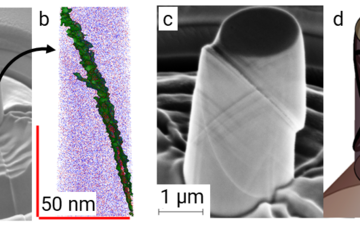All genres
1.
Journal Article
Broadening the Ambit of Raman Solvation Shell Spectroscopy on Small Particle Dispersions. Journal of Physical Chemistry C 129 (39), pp. 17892 - 17901 (2025)
2.
Journal Article
Hydration shell water surrounding citrate-stabilised gold nanoparticles. Nanoscale 17, pp. 15772 - 15784 (2025)
3.
Talk
Raman hydration shell spectroscopy can be applied to study solvation shells of nanomaterials. 17th International conference on materials chemistry (MC17), Edinburgh, Scotland, UK (2025)
4.
Talk
Applying Raman Solvation Shell Spectroscopy to Study Water Surrounding Nanoparticles. RESOLV Klausurtagung, Marienfeld (Harsewinkel), Germany (2025)
5.
Talk
Solvation Shell Water around Citrate-stabilised Gold Nanoparticle. Bunsen-Tagung 2024 - 123rd Annual Conference of the German Bunsen Society for Physical Chemistry
, Aachen, Germany (2024)
6.
Preprint
Hydration Shell Water Surrounding Citrate-Stabilised Gold Nanoparticles. ChemRxiv: the Preprint Server for Chemistry (2024)











